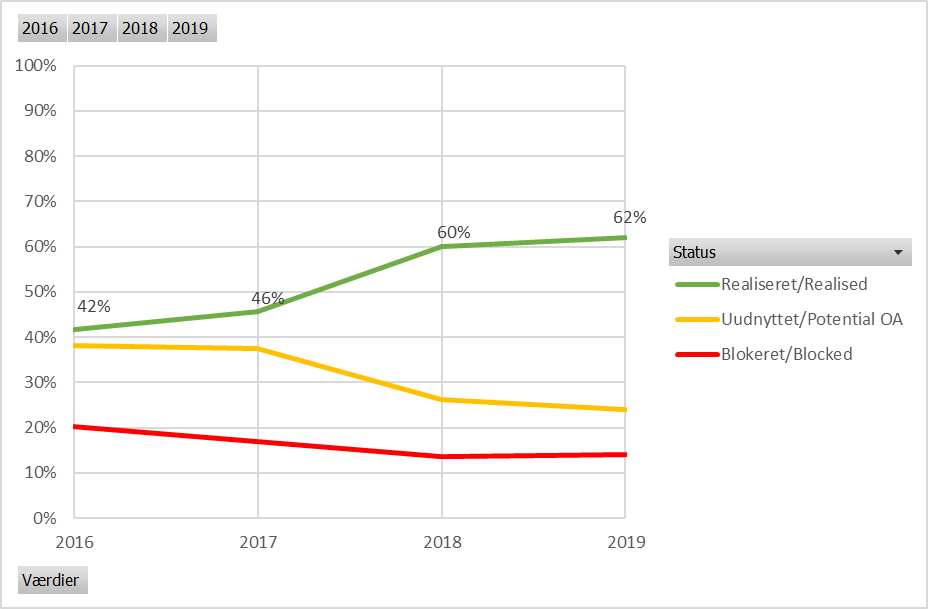SDU has exceeded its objective of publishing research articles
A recent publication shows that SDU ranks number three among Danish universities in the proportion of publicly available research article. This is indeed a positive development.
The annual Open Access Indicator measurement for research articles in 2018 has just been published. The survey shows the proportion of published research articles freely available on the Internet without any advance payment or user creation.
In the survey, SDU ranks third in comparison to other Danish universities. The University has seen a rise from 45.6% Open Access in 2017 to 60.1% in 2018.
- These are great numbers, and we’re very pleased with them. Our cooperation with both departments and individual researchers works well. They do appreciate the importance of carrying out this work, although for many it’s an extra task to be done ages after they’ve completed their publication, says Anne Thorst Melbye, office manager at the Pure Office, which is part of the library.
Call for researchers
Whereas the Open Access Indicator classifies solely on the basis of the policies of the journal, the Pure Office also classifies on the basis of input received from researchers.
For example, if the Pure Office receives a message that the researcher does not have an accepted manuscript, the publication is classified as blocked, even though the journal allows uploading.
- We therefore encourage all feedback on Open Access inquiries to be forwarded to us. It’s still possible to affect the 2019 figures by uploading accepted manuscripts, says Anne Thorst Melbye.
Great potential
- We have added all Open Access versions available to us in Pure. As for the remaining, we have contacted researchers to obtain an accepted manuscript for uploading where permitted. We encourage researchers to respond to our inquiries as to whether they can provide an accepted manuscript, says Anne Thorst Melbye, who also notes that while the proportion of unutilised potential Open Access publications is declining, it still has great potential to make the Open Access curve continue to rise.
In mid-April, SDU's departments received e-mail from the Pure Office with:
- The department's Open Access Indicator figures for 2016-2018
- The department’s current Open Access proportion for 2019
- A list of 2019 publications currently not labelled as Open Access but with an upload option. The Pure Office calls for a review of this list, in which the publications are marked as unutilised in the graph.
The departments thus have the opportunity to follow up on the list and thus create more Open Access for 2019 publications. All publications in the list can be made Open Access by uploading an accepted manuscript.
- We continue to send the departments monthly reports of publications where a manuscript can be uploaded, and we therefore encourage that the reports be used to contact researchers so that Open Access is created during the year going forward, says Anne Thorst Melbye.
The Pure Office continues to upload manuscripts in Pure,. Please send them to puresupport@bib.sdu.dk.

The figure below shows the Open Access development between years 2016-2019. The figures for 2019 are based on the forecast of the Pure Office.
Denmark's Open Access Indicator
- Denmark has a national strategy for Open Access, which is compiled annually.
- The strategy proposes an expected annual increase of 9% towards the target of 100% in 2025.
- The national measurement for the universities' proportion of Open Access in relation to the objectives of the national Open Access strategy can be viewed here: oaindikator.dk/en/overview/local
- SDU's Open Science policy also recommends that SDU's researchers upload accepted manuscripts in Pure or publish Open Access where possible.